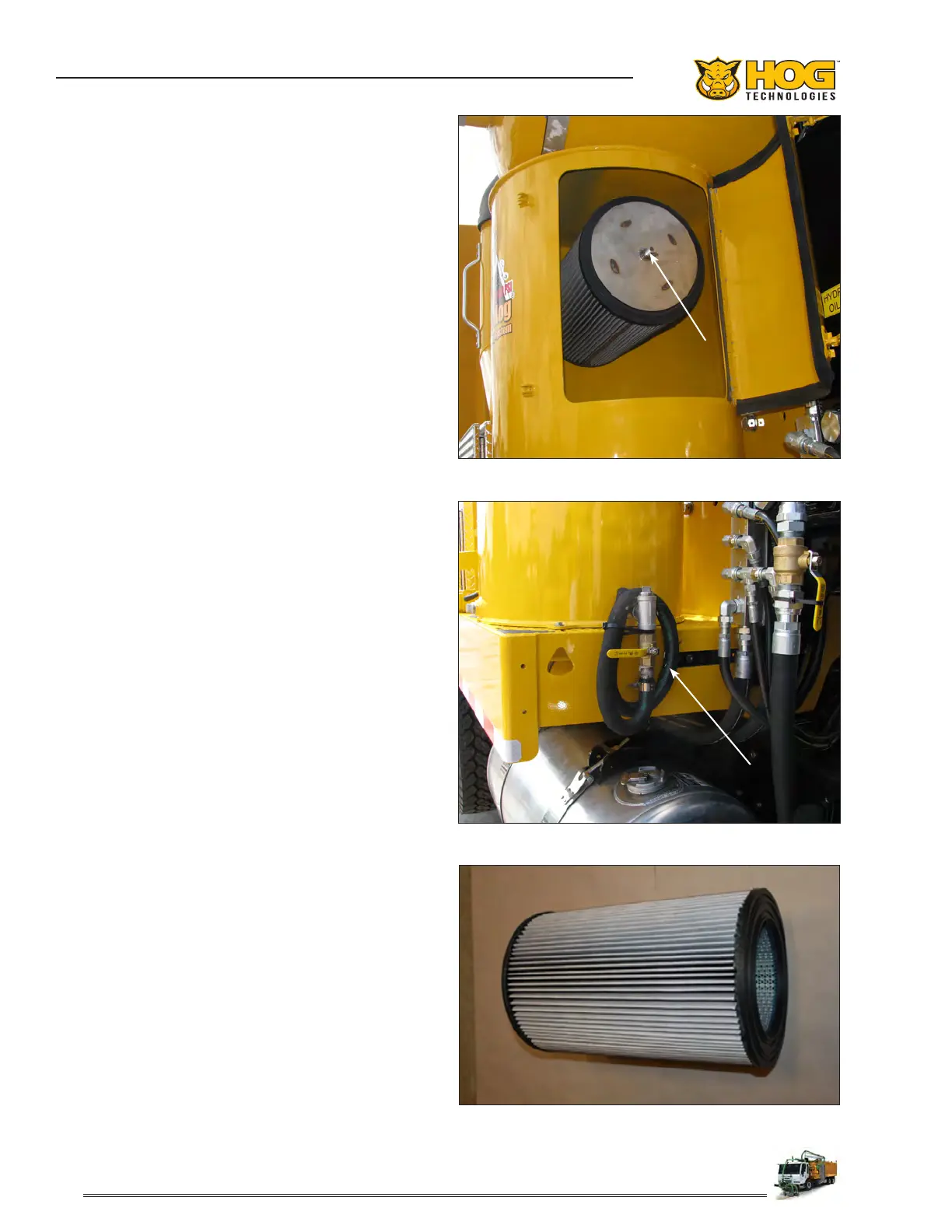112
General Maintenance
4.11 Vacuum Canister & Filter
The vacuum lter canister houses the vacuum
lter to protect the blower from debris and should
be checked at the beginning of each shift. It is
normal for water vapor to travel from the debris
tank to the vacuum lter canister and gradually
accumulate. Therefore, the canister should be
drained at the start of each shift, each time the
debris tank is drained and whenever the vacuum
lter is serviced to ensure excess water does not
collect to an unsafe level in the bottom of the
lter canister. There is a manual drain valve at
the bottom of the lter canister to remove excess
water as needed.
The lter canister contains a pleated, reusable
vacuum lter that can be easily removed through
the door on the side of the canister. The vacuum
lter should be inspected and cleaned before each
shift.
Use the following procedure to drain the can-
ister and remove and clean the vacuum lter:
1. Make sure the waterblasting system is shut-
down and the truck is in the service position.
2. Open the lter access door and drain accumu-
lated water from the canister. Close the valve
when draining is complete.
3. Remove the wing nut that secures the vacuum
lter to the canister and remove the lter.
4. Use a detergent degreaser to cut the oil and
grease, then power wash the lter with pres-
sure not exceeding 2000 psi.
5. Thoroughly inspect the lter for holes and
damage. Replace the lter if its condition is
questionable, it is damaged or has holes that
could allow debris to get into the blower.
6. Install the cleaned or new lter and secure it
with the wing nut. Hand tighten the wing nut.
Make sure not to over tighten the wing
nut and collapse the lter.
7. Close and latch the lter access door.
Vacuum Filter Access Door, Filter & Wing Nut
Filter Canister Drain Valve & Hose
Typical Pleated Vacuum Filter
